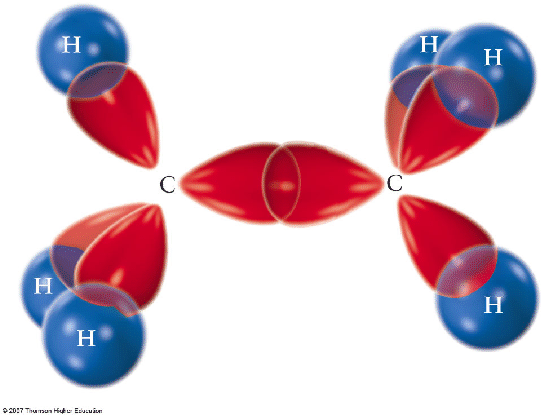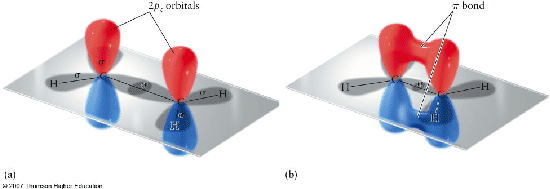Recall that a sigma bond is a single bond where two orbitals have significant overlap. For alkanes (hydrocarbons with single bonds only) all carbon atoms have an #sp^3# orbital hybridization. The #sp^3# arrangement creates 4 hybridized orbitals that are #109.5^@# apart from one another with a tetrahedral geometry.
Consider Ethane (#CH3CH3#)

Ethane has 4 sigma bonds for each carbon (one to the other carbon, three to each hydrogen). With the #sp^3# hybridization, there is no way to a double bond between the carbons without causing significant strain and interference.
Consider the orbitals for ethene (#CH_2CH_2#), an alkene with a double bond between the two carbons.

The carbon atoms in ethene have an #sp^2# hybridization meaning that there are 3 hybridized orbitals in a trigonal planar geometric arrangement with #120^@# angles between them and one unybridized p orbital (the #p_y# orbital). The #sp^2# hybridization facilitates a double bond between the carbons because it allows an #sp^2# orbital to overlap through a sigma bond and the unhybridized #p_y# orbitals for each carbon to also overlap. This p orbital overlap is a pi bond.
Although a pi bond is higher energy than a sigma bond, the combination of a single sigma bond and a single pi bond in a double bond is much lower energy overall than trying to force two sigma bonds between two atoms.


